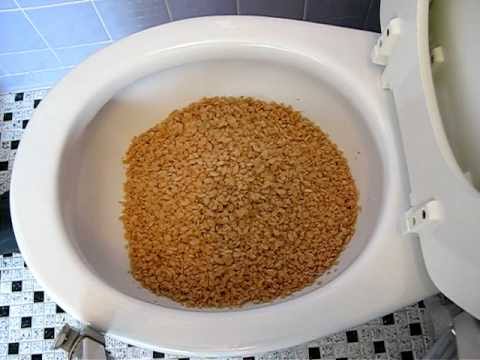How do you really feel in regards to Is it safe to flush food (especially rice) down the toilet??

Introduction
Lots of people are often faced with the issue of what to do with food waste, particularly when it comes to leftovers or scraps. One typical concern that develops is whether it's all right to purge food down the bathroom. In this article, we'll delve into the reasons that individuals may take into consideration purging food, the consequences of doing so, and alternate techniques for correct disposal.
Reasons that individuals could consider flushing food
Absence of recognition
Some individuals may not know the potential injury brought on by flushing food down the toilet. They may wrongly believe that it's a safe practice.
Ease
Flushing food down the toilet might appear like a quick and simple solution to getting rid of unwanted scraps, particularly when there's no nearby trash can readily available.
Negligence
Sometimes, people might simply choose to flush food out of large negligence, without taking into consideration the consequences of their actions.
Repercussions of flushing food down the toilet
Ecological influence
Food waste that ends up in waterways can add to air pollution and harm marine ecological communities. In addition, the water made use of to purge food can stress water resources.
Pipes issues
Purging food can result in clogged up pipelines and drains pipes, causing expensive pipes repair services and hassles.
Kinds of food that should not be flushed
Fibrous foods
Foods with coarse appearances such as celery or corn husks can obtain tangled in pipelines and trigger clogs.
Starchy foods
Starchy foods like pasta and rice can soak up water and swell, bring about blockages in pipes.
Oils and fats
Greasy foods like bacon or food preparation oils must never be purged down the bathroom as they can solidify and cause obstructions.
Correct disposal techniques for food waste
Utilizing a garbage disposal
For homes outfitted with waste disposal unit, food scraps can be ground up and flushed with the pipes system. However, not all foods appropriate for disposal in this fashion.
Recycling
Specific food packaging products can be reused, minimizing waste and reducing environmental influence.
Composting
Composting is an environmentally friendly method to dispose of food waste. Organic materials can be composted and made use of to enhance soil for horticulture.
The value of correct waste administration
Reducing environmental damage
Correct waste management methods, such as composting and recycling, assistance reduce air pollution and maintain natural deposits for future generations.
Securing plumbing systems
By preventing the method of flushing food down the commode, home owners can stop pricey plumbing repair services and keep the honesty of their pipes systems.
Final thought
In conclusion, while it might be appealing to flush food down the commode for ease, it is essential to recognize the prospective consequences of this action. By taking on proper waste administration techniques and throwing away food waste sensibly, individuals can contribute to much healthier plumbing systems and a cleaner atmosphere for all.
FLUSH FOOD DOWN THE TOILET?
FLUSHING FOOD CAN CAUSE BLOCKED DRAINS IN YOUR HOME
All of the plumbing fixtures in your home are connected to the same sewer pipe outside of your home. This outdoor sewer pipe is responsible for transporting all the wastewater from your home to the Council sewer mains. Even small pieces of food that go down the kitchen sink can cause problems for your sewer. It should therefore be obvious that flushing larger bits of food, such as meat, risks a clog in either the toilet itself or the sewer pipes. Flushing greasy food is even more problematic because oil coagulates when it cools, coating the interior lining of your pipes.
THE TOILET IS NOT A BIN
Food isn’t the only thing that people shouldn’t be flushing down the toilet. People use the toilet to dispose of all kinds of things such as tampons, makeup wipes, dental floss, kitty litter and even underwear. Water goes to great lengths to educate residents about the high costs and stress placed on wastewater treatment systems simply from people flushing the wrong stuff down the toilet. It costs taxpayers millions of dollars each year, and homeowners thousands in blocked drain repairs.
FLUSHING FOOD IS A WASTE OF WATER
Flushing food is a waste of our most precious resource - water. In June this year Level 1 water restrictions were introduced to protect water supply from drought conditions. Much of New South Wales continues to be affected by prolonged drought with recent figures revealing up to 97 per cent of the state remains in drought. Depending on whether you have a single or dual flush toilet, every single flush uses between five and 11 litres of water. In the current climate this is a huge amount of water to be wasting on flushing food that should be placed in the bin (or better yet, the compost).
https://www.jabplumbingsolutions.com.au/blog/can-you-flush-food-down-the-toilet

As a fervent person who reads about Is it safe to flush food (especially rice) down the toilet?, I was thinking sharing that editorial was sensible. So long as you enjoyed reading our post plz remember to pass it around. Many thanks for your time. Don't hesitate to check our blog back soon.
Call Today